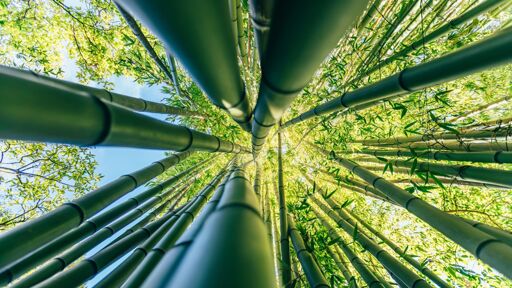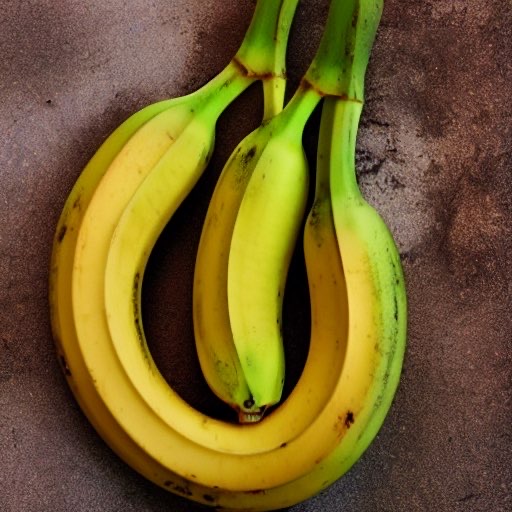50 days worries me.
I know my market will buy 12 tons and have them sit around for 6 months. Mid Atlantic Giant Foods actualy found a way to make paper bags that can’t last from the store to my counter without ripping into pieces.
50 days submerged in soil
or 150 days in the corner of the warehouse in a dank-non climate controlled corner.
Can we harvest bamboo to extinction next?! Starting with my neighbor’s yard…
Bamboo grows like mould in a slumlords apartment block
You can try. That shit’s amazingly resilient.
Why does the bamboo in your neighbors yard upset you?
I guess you’ve never have neighbors with bamboo!
It has long since become a problem for every neighbor that borders their yard. I’ve been digging the runners our of my yard since we moved in 8 years ago, and I’m about ready to spend ~$10k on remediation (burying a wall that the roots can’t penetrate).
It is not native and grows out of control where I live. It takes over acres too densely for anything else to grow.
Some grow through rhizomes and often people plant it without doing their homework now the whole neighborhood has bamboo and it’ll push though pretty much anything in your garden. Even clumping varieties can cause soil issues or push fences
because it spreads insanely far, probably. like into their yard
Cellulosics are a very mature field and there’s not a lot that is truly new in it. Regenerated cellulose is incredibly old technology and a material that biodegrades in 50 days is basically useless. Not even raw bamboo biodegrades that quickly. This is an incredibly sensationalist article and I am not responding sure what the purpose is. The biodegradable plastics space has a lot of cool things happening, and biodegradable cellulosics are a part of that, but this just seems like a fluff piece written about an interesting, but not groundbreaking, scientific discovery really only applicable for people working in the polymers industry.
I am not disagreeing but i do want to point out that
biodegradable in 50 days
Does not seem entirely useless when i consider single use plastics. Imagine if festivals had cellulose cups?
So how is this stuff different than the celluloid that they make pens and glasses out of? Because that stuff is pretty tough.
Also are you saying we want plastic that biodegades quicker? Like we want plastic we can compost faster than wood
AI slop article, they pump out 25 a day.
It says 50 days in soil, I’m guessing it’s more stable than that when kept as regular packaging. It probably relies on microorganisms and/or other creatures that can break down cellulose to be present, which in a warehouse shouldn’t be present
Even 50 days is relatively fine if it’s cheap enough to replace saran wrap for food products. Most perishables don’t last that long anyways
Of course every new invention is probably overreporting its successes for funding, but these kinds of innovation is always one step towards a better future.
Even 50 days is relatively fine if it’s cheap enough to replace saran wrap for food products
well we already have that
and that’s 50 days total, so those big commercial rolls of plastic wrap are much harder because they’re now perishable too: you can’t just stock a warehouse up
https://www.nature.com/articles/s41467-025-63904-2
I went and read the paper, but the TLDR is:
- The bioplastic is a rigid material with high tensile strength a bit higher than conventional rigid plastics
- Made from acidic solvents to create a gel consisting of cellulose
- Can be closed loop recycled by redissolving with the same solvent
- Depends on soil microbials to break down the cellulose within 50 days
- Cost analysis presented it at 2.3k usd per ton, with the cheapest plastic (HIPS) at 1.3k/t and the most expensive (PLA) at 2.6k/t. Though the cost analysis didn’t show all the plastics it used for material comparison.
You can basically think of it as a fancy wood structure, since it’s primarily cellulose.
Cellophane is almost 100 years old.
Isn’t cellophane a flexible plastic? This one is more comparable to hard plastics, which was my mistake since my initial assumption before actually reading the research paper was that it’s meant to replace things like plastic bags
Why not one time uses, such as for tablewear for food on airplanes? Intuitively it seems like we waste a lot in the “one time use” category where it’s also expensive and inconvenient to wash and reuse
Lots of single-use plastics are years old by the time they make it to the end user.
The logistics of a plastic that degrades that quickly are difficult.
Mercedes made cars with degradable plastic in the wiring harnesses in the early 2000s. Every single car was scrapped within 8 years.
I had a friend who was working with a very exciting bioplastic that in the end was completely scrapped because it turned out the plastic made was carcinogenic or poison or something. I have hopes for something to come and replace plastic but we definitely need to make sure what we replace it with isn’t just as awful is some new and terrible way… Or just the same and terrible ways.
So it’s just like all other plastic, then? What did they expect.
We don’t need research to know that we need to use paper and glass…
I hope this is true but I remain skeptical of the initial claims. PLA is supposedly biodegradable as well, however in practice, it only biodegrades under very specific circumstances that are tricky to sustain without putting a good amount of work and planning in.
Regardless of whether or not it truly biodegradable, switching from oil to a plant based plastic is a carbon sink.
I’d imagine it’s also better than having microplastics in my balls. Bamboo polymers in the brain sounds less threatening.
Plus if it biodegrades in 300 years that’s still way better than what we are doing
Beats using oil, agreed, but plastic in our bodies is probably still very bad even if it’s plant based.
Even better is to switch to glass and paper
Isn’t it only a carbon sink if you keep microbes from digesting it?
Is there a biodegradation of it that doesn’t release co2?
If it gets incorporated into the soil then some will stay there. Plus many landfill designs prevent decomposition entirely
Well yea, but they claim the point is that it’s not going to need to end up in landfills because it biodegrades. Meaning at best it’s carbon neutral, but that’s unlikely unless only renewable energy is used it produce it in the first place.
Don’t get me wrong, it sounds miles better for the earth than making more microplastics, but it’s not much more than that, and not some kind of panacea.
but they claim the point is that it’s not going to need to end up in landfills
No they didn’t. They claimed it is biodegradable. It can be composted if your local trash collection service separates garbage that way, but most don’t. Just because it’s biodegradable doesn’t mean you can just chuck it outside
I didn’t mean to imply chucking it outside was the plan, but I do have a compost pile for food scraps and from what I’ve read it’s better for methane production to compost locally than to add biodegradable materials to landfills. So presumably the idea with creating this type of plastic is to reduce landfill usage as well.
Isn’t the big excitement that this plastic can biodegrade in relatively normal soil conditions? As opposed to the industrial composting facilities that are necessary for PLA and other corn based plastics?
if it enters eco system back, its biodegradation. more technically, biodegradation just means breaking polymers by biological processes. most of the times, it either means hydrolysis (usually breaking ester/amide linkages) or oxidation (so producing acid from alcohol, or producing co2 in end). all carbon in body “eventually” becomes co2, so it is not a problem, purely biological means of co2 production are usually not that scary.
The claim is fifty days in soil, but I don’t know if that means any soil within standard temperature, moisture, and pH levels, or if they’d be allowed to publish that if it only works in the soil surrounding acid lakes or something.
I’d love to see a comparison with PHA, the only true bioplastic available for 3D printing right now (as far as I know). Sounds really promising!
Great! But this doesn’t mention cost. Another biopolymer doesn’t matter at all unless it is cheaper than petroleum based polymers. In the end high volume consumer products are extremely price sensitive.
@Baguette@lemmy.blahaj.zone said:
- Cost analysis presented it at 2.3k usd per ton, with the cheapest plastic (HIPS) at 1.3k/t and the most expensive (PLA) at 2.6k/t. Though the cost analysis didn’t show all the plastics it used for material comparison.
The petrochemical industry has significant economies of scale, making it difficult to dethrone. Also, there are some shady political shenanigans to ensure its continued existence. Getting rid of oil is going to require some radical changes.
Getting rid of oil would also require radical breakthroughs in solvents. I doubt oil is going anywhere even if ICEs and plastics stopped being used.
The thing is, oil is an incredible resource with properties unlike any other, so we should stop fucking burning it
If all we we use oil for is solvents and lubrication and such, it would probably be perfectly fine, and we would have enough for centuries.
We should also stop using it for food packaging. I don’t need the thing that is covering my vegetables to last for hundreds of years.
On top of that, the rest of chemical industry is largely dependent on oil, with oil-based products literally everywhere. Even asphalt and bitumen used in road construction comes from crude oil. Lubricants, dyes, detergents, waxes and emulsifiers are also derived from oil, just to name a few.
Even when we develop clever new methods to manufacture all of these products from plant-based materials, the logistics chain to manage the volumes required by modern life is not there yet. Building this infrastructure will take a long time, just like it took decades to create the addiction we’re currently in.
If we stopped making power and transportation from burning oil and gas that would be a huge improvement. It’s usage as a solevent or other applications is negligible.
Get rid of the plastics on top of that and we might actually have a chance
Plastics were a luxury good 100 years ago. How much is petroleum distillation subsidized currently? That contributes to the cheapness of plastic. China has demonstrated that doing things for the people’s benefit is worth their time instead of focusing on endless profit.
If Chinese companies start using bamboo plastic for disposable packaging it’ll make more of an impact than you repeating oil oligarch propaganda
I’m not a propagandist, I’m an engineer who designs consumer products. As an environmentalist I actively campaigned my last employer in support of bio plastic options. However in over 30 years I have never been able to specify a single part made from bio plastic due to either material properties and/or the cost of raw resin. Like I said, good for the Chinese. But in America corporate greed rules.
There’s no propaganda in that post. Unless forced by consumer demand or the government companies will not switch to a more expensive packaging. They’re about quarterly profits, that’s it.
Additionally, there are some oil applications we don’t have a replacement for, however we have replacements for pretty much all the largest polluters (energy, transport, and plastic).
China has demonstrated that doing things for the people’s benefit is worth their time instead of focusing on endless profit.
Propaganda deepthroating level: all porn actresses are envious.
Bamboo? You mean the stuff that grows well with less water and pesticides so people are all hooting and hollering, but people are razing forests to grow and requires enormous processing to extract the goodies?
https://www.euronews.com/green/2020/11/30/bamboo-eco-friendly-fabric-or-environmental-disaster
Don’t forget, people are involved in this process, and that means only one thing: disappointment.
If you think anything involving people is doomed to fail then why don’t you just go live in a cave somewhere and leave the rest of us alone?
Who said anything about “fail”? Lie, exaggerate, exploit, sure. I have bamboo sheets, but I don’t delude myself into patting myself on the back about how wonderful I am, they just feel cooler.
Jaysus, you just put everyone on Orphan crushing machine.
wait it’s just another spin on cellophane (with some cellulose formate)
it’s good that process uses less harmful reagents, but it’s not new-new thing
Someone won’t like how it feels in their mouth to suck on and will go back to penises
And you thought planned obsolescence wasn’t bad enough…
China truly is revolutionizing the world.
? We’ve had biodegradable plant based plastics for decades now.
The issue is cost and use, just the same as any other new discovery we hear about.
I’m American. At this point anything looks amazing to me compared to my shit show of a country.
Loads of American labs have already made this sort of stuff before as well, as have many other Chinese and others across the world. It’s not a new or novel concept. Every year we see multiple headlines like this.
hell you don’t even need a lab for a lot of bio plastics: you can produce them in your kitchen
I’d choose China over USA, any day.
50 days is borderline useless when you factor in logistics. At best you fundamentally can’t have a standing inventory.
Still, a step in the right direction
Paper degrades in about that much time, but we still use it for plenty of things.
And guess what paper products tend to be wrapped in until they are put in disorders /on shelves? I’ll give you a hint, it starts with a P
Paper.
Reams of printing paper are wrapped in paper. Those stacks of reams are put in cardboard boxes, made of paper. Those are put in metal trucks.
I would recommend going and actually looking at a stack of paper cups. They are pretty much universally in a plastic bag.
Also, those cardboard (or even paper) boxes that printer paper come in? They get put in larger cardboard boxes and crates… which are generally wrapped in glorified plastic wrap before they get loaded into those metal trucks. And often stay wrapped on their pallets at the warehouse until they are set for their final destination.
And, to be clear: That isn’t necessarily a bad thing. It is effectively the idea behind electric cars. Move the pollution/recycling burden away from the end user and keep it at the distribution center/power plant where more expensive efforts can be done to reduce waste/pollution. And… much like with “clean coal”, the end result tends to be dumpsters full of plastic on their way to the landfill because recycling is effort.
But the idea is sound. Use the more robust polymers for shipping and long term protection. I just… still think 50 days is too little for anything even remotely close to an end user without a LOT of extra coatings (for example: Those paper milk cartons tend to have a LOT of wax… or polymers) which kind of defeat the purpose.
That wax can be natural and biodegradable. Pallets could be protected with hermetically sealed metal walls.
We have no need for plastic. It’s only done because we haven’t banned companies from doing it.
…
Sorry, you want to replace wooden pallets with hermetically sealed metal boxes? Maintenance costs go through the roof and it might be worth reading up on what they actually use to make those seals (hint: Polymer compounds). You also drastically increase the weight at every step AND add very significant logistics issues (can’t have crates too close to the door in case it is rainy). All of which translate to increased consumption of fossil fuels.
Again: We don’t overuse polymers because of wanting a summer home in northern Canada. Polymers are used because of their materials properties being… quite frankly insane. Super light material that can take a beating while providing strong water/weather resistance. Like… your “let’s put things in a metal box” is already solved by just wrapping some fairly cheap plastic wrap around things. Shipping a hundred plastic bottles uses MUCH less energy/fuel than shipping a hundred glass bottles for weight of the bottles alone. And the glass bottles need significantly more packaging/protection to survive shipping which drastically increases costs on top of that.
There is a LOT of room for improvement. EVERYONE hates paper straws but they are a really good idea that greatly reduces how much plastic ends up in a landfill. But people also rapidly realize that those paper straws need to be protected from creation to end use and… that is still going to be plastic. Optimally you are wrapping the box/stack instead of the individual straws so it is still a net gain, but… yeah.
And there is a LOT of work going in to making greener plastics. But when you engineer out the material properties that made you use it in the first place… it is a cool novelty and great for marketing but it doesn’t really change the amount of plastics used in getting that to the point where someone feels good because they are using biodegradable utensils.
It biodegrades in soil in 50 days. Don’t store it in damp, biologically active media and you should be good.
I’ve had a dried flower arrangement in my house for about a year. It’s fine. Slap that baby in the compost tumbler and it will be soil within a few weeks.
Slap that baby, set him free

Dance magic, dance
So don’t store liquid in it? Not viable for beverage containers.
And unless you are going to use a sturdier plastic to surround it (which actually is a very good model because it keeps the harder to recycle stuff out of homes)… tell me you never worked inventory without telling me you never worked inventory?
What percentage of single use plastic is used for storing liquids? I would imagine it’s a minority, with things like plastic bags making up the majority.
Plus very acidic liquids like soda may not be bio-active enough to cause this to break down, depending on what the process is.
What percentage of single use plastic is used for storing liquids? I would imagine it’s a minority, with things like plastic bags making up the majority.
Plastic bottles are the most common type of container for fluids and make up a huge portion of plastic waste. Drinks, cooking oil and vinegar, cosmetics, personal hygiene products, cleaning products, motor oil, paints, medical products… and that’s just the common consumer stuff. Plastic bags are a big part too but liquid bottles are certainly not a minority.
Plus very acidic liquids like soda may not be bio-active enough to cause this to break down, depending on what the process is.
You also have to be concerned about the outside of the container. Will it be washed as part of the production/handling process? Will sweat and bacteria from human hands cause it to start breaking down? It will be packed in a box for shipping, then unpacked at a store, then picked up and looked at by who knows how many people before being purchased, then it has to stay in one piece until the product it contains is used up. A bottle of toilet cleaner or shampoo or laundry detergent might be handled hundreds of times, and its lifespan from production to final disposal might be a year or more.
for liquids there’s aluminum or glass
Then we should go back to glass bottles.
Which have massive implications on weight and structural packaging. A plastic soda bottle is light and sturdy. A glass soda bottle is heavy and shatters. Also recycling of glass is not entirely straightforward in a lot of regions.
The world doesn’t (over) rely on polymers just because everyone wants to have a summer home in Alberta. They have materials properties that make them ridiculously good for storage and packaging. They just have very serious implications on the environment.
Reducing those environmental implications is VERY good and a lot of work is going into it. But doing so to the point it removes their beneficial properties… is kind of missing the point.
There’s several big tradeoffs there.
Glass is heavy compared to plastic, and also bulkier. A truck full of product in glass containers will carry substantially less product volume than if it were plastic containers. In order to distribute the equivalent amount of product, more trucks will have to make more trips. When you scale this up to national distribution you’re talking about hundreds more trucks on the road, thousands more trips per year, which is going to have an environmental impact.
Glass is fragile compared to plastic. Some accounting is already done for product loss due to breakage during distribution, but plastic containers are fairly durable (part of the problem of course). If you switch to glass the loss percentage goes up, which again means you have to make more trips to distribute the same amount of product, so compounding the environmental impact.
No, you’re understanding this wrong. They don’t mean it will degrade on the shelf or in transit, only in soil. If true, this is the shit.
Additionally, the bamboo plastic can be degraded in soil within 50 days or closed-loop recycled (where objects are recycled and used to remake similar products) whilst retaining 90% of its original strength, demonstrating its potential as a sustainable but high-performing alternative to traditional plastic materials, according to details released by researchers.
Yeah, but soil is basically moisture and bacteria. Same as food, unless it is freeze-dried or so. Still, as alternative to paper straws or one-time cups it could be great.
I agree, it’s for the single use plastics, and for food that already has a short life.
Exactly and single use plastics are the largest problem we face. Medical and food handling would be much more difficult and expensive without single use plastics, so a good-enough plastic say for gloves that get changed really often would be a huge win.
Except for literally anything dry or single use. Packaging for screws, toys, electronics, medical material and also actual items themselves like straws, single use plates/cups/forks, etc.
Completely useless amiright
I was looking at a crystal clear, water tight, biodegradable, algae-based plastic the other day. The problem is, well, that it is biodegradable. You can’t package food with it because it will grow mold and then lose its properties.
Possibly for situations where it stays dry it could be a great plastic, but that pretty much excludes all shipping and food use.
Yeah. I can’t actually think of an application for plastic where this makes sense, but there probably is one.
But this really feels like a proof of concept paper that hit mainstream news. But those tend to actually have very useful applications in niche corners (that are only sometimes weapons…) so cool.
Plastic grocery bags Plastic single use gloves Plastic straws Packaging for electronics Packaging for dry goods like beans/pasta Packaging for short shelf life items like fruit/bread
Honestly, there’s a huge number of things we use plastic for that don’t require it to sit in contact with bacteria/liquid for weeks at a time. I’d be willing to bet it’s the majority even.
Like I said, it really depends upon what exactly triggers “biodegrading”. Because those plastic gloves might be in a box in a warehouse for months prior to getting to the hospital… and then another month in the supply closet.
That is WHY so many products have like five layers of packaging. Because maybe someone left the door open on a rainy day and some of those cardboard boxes got soggy. The plastic wrapping your pallet keeps it out and it is mostly the warehouse workers who suffer (and they’re barely people in the eyes of the law…).
is mostly the warehouse workers who suffer (and they’re barely people in the eyes of the law…).
As someone who works with warehouse material handlers (aka forklift operator with PPE) on a daily basis, I am pretty sure they are barely people in their own eyes too.
Single use plastics intended for quick use and then disposal mostly?
I’m thinking something like a medical use where a plastic thing is used exactly once and then thrown away that same day. Maybe a syringe or whatever.
Medical supplies actually probably are a really good application for that. Traditional polymers to wrap the palette, cardboard to wrap the disposables, and then bamboo plastic to wrap the disposables themselves. Since those actually have fairly strict storage requirements once they get off the truck.
Just a question of if that is cost effective to have multiple types of plastic at the factory.
Most biodegradable polymers are water-permeable (water intrusion is how bacteria get inside the material to break it down). Anything water-permeable is not appropriate for medical use, even as a wrapper for something else, because you can’t guarantee that the thing inside is sterile.
And there you go
Not even for plastic cups like at fast food chains? Those are in constant demand and get thrown out instantly after use
Demand varies and there are a LOT of warehouses on the way from the cup factory to the starbucks. Cups can EASILY spend a month or three just sitting in a damp cardboard box at a distribution center. Which is “fine” because they have at least one or two more layers of outer packaging around the stack of venti iced coffee cups.
So they just test it to check if it’s fine or not fine? And then make changes accordingly? Change is necessary and inevitable
So they just test it to check if it’s fine or not fine? And then make changes accordingly?
Those “changes” are throwing out a significant part of your inventory and, if you have the money, ordering more. So the shipping and manufacturing costs for the same number of plastic cups (or whatever) becomes over 2x because you ALSO have the cost of taking the box of slop to the landfill.
I 100% agree change is necessary. But it is also worth thinking before making the change and deciding if it would actually save on “carbon”.
Well at least it’s biodegradable slop! My experience is it comes with instructions that are inevitably ignored and there’s some heavy sighing, eye rolling, shrugging and it’s put down as “short-term operational variance from sustainability transition” or something else that says “it won’t happen again, guv”
You’re right but because this is a politicized issue, you seem like you’re on the wrong side and therefore are wrong and evil. There is a lot of good work being done on biodegradables but 50 days is way too short of a timespan. If you put a piece of bamboo in the ground it’s not going to biodegrade in 50 days, for example. Most of the disposable plastic we use is on stuff that is wet, so I am incredibly skeptical about the utility of this.
It’s not fruit.




















